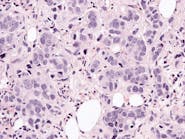Overall cancer death rates continue to decline in men and women for all racial and ethnic groups in the United States, according to the latest Annual Report to the Nation on the Status of Cancer, as reported in a news release from the National Institutes of Health (NIH).
During 2001 to 2018, declines in lung cancer death rates accelerated, and death rates for melanoma declined considerably in more recent years, reflecting a substantial increase in survival for metastatic melanoma. However, the report finds that for several other major cancers, including prostate, colorectal and female breast cancers, previous declining trends in death rates slowed or disappeared.
The report, appearing in JNCI: The Journal of the National Cancer Institute, also finds that overall cancer incidence rates continue to increase among females, children, and adolescents and young adults (AYAs). All trends in this report cover the period before the COVID-19 pandemic.
The annual report is a collaborative effort among the American Cancer Society (ACS); the Centers for Disease Control and Prevention (CDC); the National Cancer Institute (NCI), part of NIH; and the North American Association of Central Cancer Registries (NAACCR).
The report shows a decrease in death rates for 11 of the 19 most common cancers among men, and for 14 of the 20 most common cancers among women, over the most recent period (2014-2018). Although declining trends in death rates accelerated for lung cancer and melanoma over this period, previous declining trends for colorectal and female breast cancer death rates slowed and those for prostate cancer leveled off. Death rates increased for a few cancers like brain and other nervous system and pancreas in both sexes, oral cavity and pharynx in males, and liver and uterus in females.
An analysis of long-term trends in cancer death rates in this year's report also shows that death rate declines accelerated in both males and females from 2001 to 2018. In males, a decline of 1.8% per year in 2001-2015 accelerated to a decline of 2.3% per year during 2015-2018. In females, a decline of 1.4% per year from 2001 to 2015 accelerated to a decline of 2.1% per year during 2015-2018. The report found that overall cancer death rates decreased in every racial and ethnic group during 2014-2018.
However, increases in cancer incidence and death rates or deceleration of previous declining trends for some other cancers, such as colorectal and female breast cancers, are likely due to risk factors such as obesity.
"The continued decline in cancer death rates should be gratifying to the cancer research community, as evidence that scientific advances over several decades are making a real difference in outcomes at the population level," said Norman E. "Ned" Sharpless, MD, Director of the NCI. "I believe we could achieve even further improvements if we address obesity, which has the potential to overtake tobacco use to become the leading modifiable factor associated with cancer."





